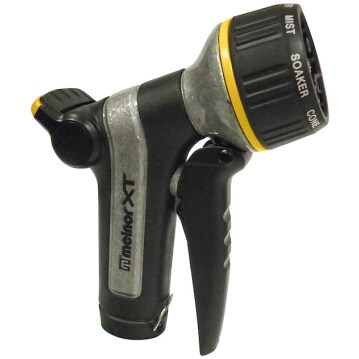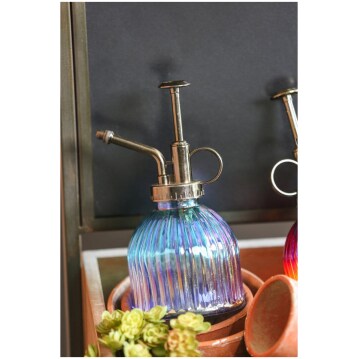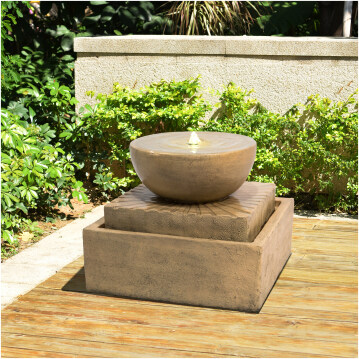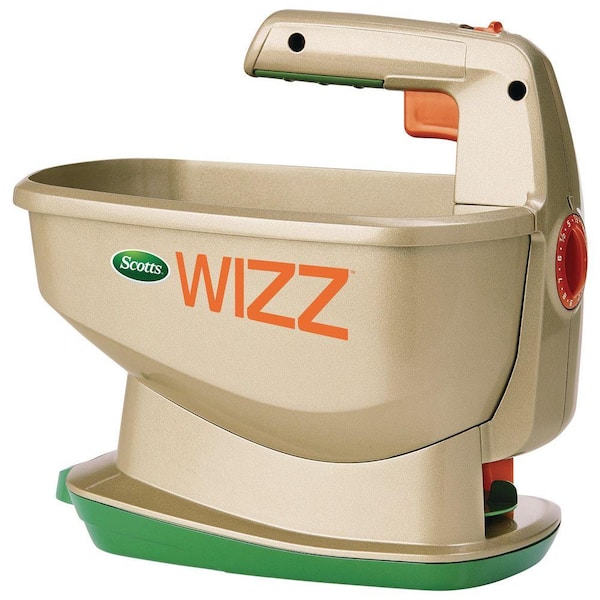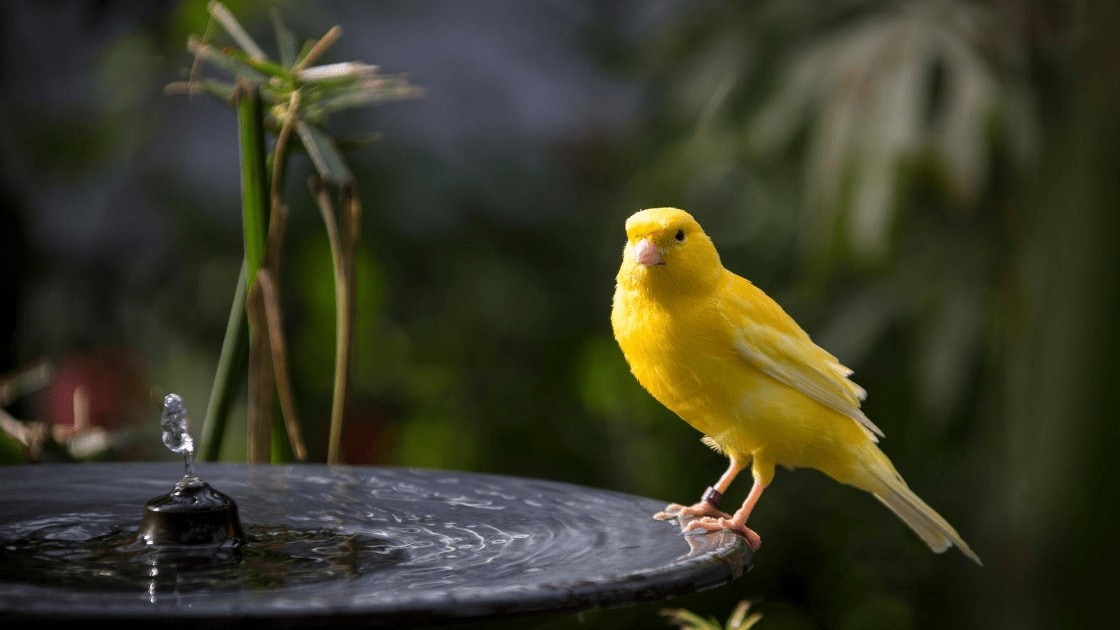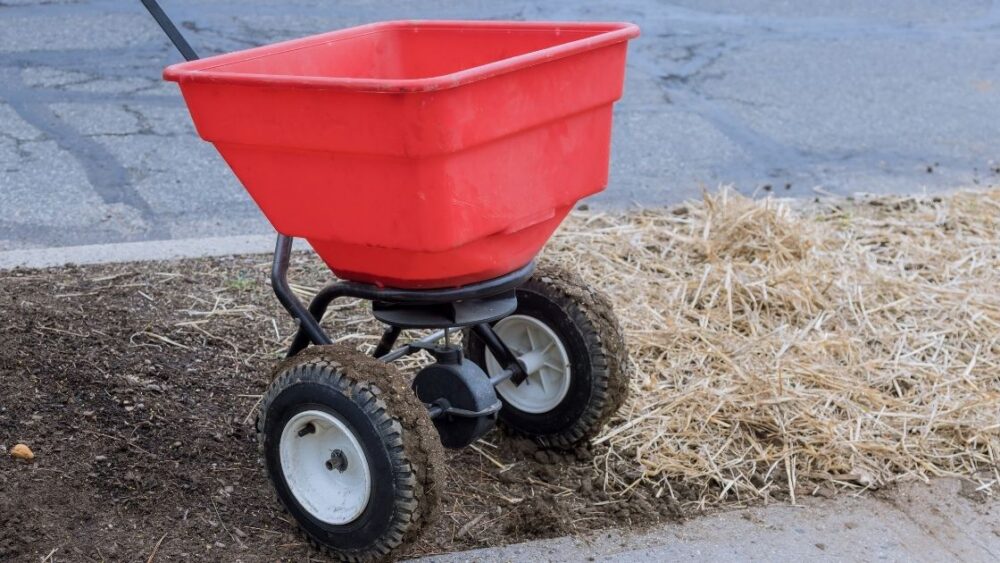
If you’re a homeowner, chances are you’ve heard of broadcast spreaders. But what are they? Broadcast spreaders are devices that help you distribute seed, fertilizer, and other materials evenly over a large area. In this blog post, we’ll discuss the different types of broadcast spreaders and their uses. Keep reading to learn more!
What are Broadcast Spreaders?
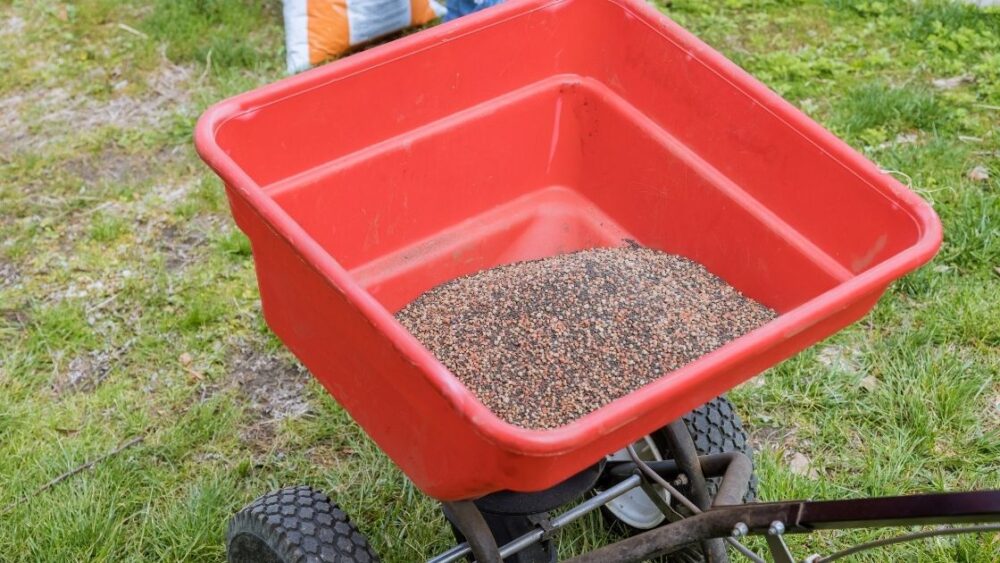
Broadcast spreaders apply material, such as fertilizer, grass seed, and salts in a fan-like pattern and come in handheld, walk-behind, and towable models. Walk-behind models are larger and must be pushed or pulled, while towing spreaders are normally towed with small tractor and used for fields. Handheld models are smaller, battery or hand operated, and generally used for small lawns and areas.
While these spreaders normally come in three different types they have their usage and purpose as specified below:
Browse our Affiliate Products
Handheld
Handheld spreaders are small and can be carried around easily. They are battery-operated and have a small hopper that can hold up to 10 pounds of material. These types are generally used for small lawns where minimal seed, fertilizer, and salts are used.
Some popular handheld spreaders are:
- Scotts Wizz Hand-Held Spreader
- Spot Spreader
- HBC Rotary Hand Spreader
- Ryobi ONE+ 18V 1 Gal. Spreader
- Scotts Whirl Hand-Powered Spreader
Many popular handheld spreaders can be found by following these links: amazon.com and homedepot.com
Walk-behind
Walk-behind spreaders are larger and must be pushed or pulled while in use. They have a large hopper that can hold up to 50 pounds of material. These types are generally used for larger lawns where more seed, fertilizer, and salts are needed.
Some popular walk-behind spreaders are:
- Scotts Turf Builder EdgeGuard Mini Broadcast Spreader
- Scotts Elite Spreader
- The Groundskeeper Walk-Behind Broadcast Spreader
- Agri-Fab 45-0462 Push Broadcast Spreader
Tow-behind
Tow-behind spreaders are the largest and must be towed behind a vehicle while in use. They have the largest hoppers that can hold up to 100 pounds of material. These types are generally used for large properties and fields.
Some popular tow-behind spreaders are:
- Chapin 8620B Tow Behind Spreader
- Agri-Fab 85 lb. Tow Broadcast Spreader
- Brinly 125 lb. 2.5 cu. ft. Tow Behind Broadcast Spreader
- John Deere 175 lb. 3.5 cu. ft. Tow-Behind Broadcast Spreader
Since there are many types of broadcast spreaders on the market, it is important to choose the right one for your needs since each has its own applications. Be sure to read the manufacturer’s instructions carefully before using any spreader.
What are the Benefits?
Broadcast spreaders provide even coverage of material, which is important for ensuring your lawn or garden receives the proper nutrients. They are also easy to use and can be operated by anyone. Plus, many models come with a spreader guard to prevent product from spreading onto non-lawn areas. If you have ever spread seed or fertilizer by hand, you will quickly realize how important a spreader really is. You either put to much down on one area, or not enough in others. The main benefit of a broadcast spreader is to achieve maximum coverage while wasting very little material.
Remember to Clean After Each Use
It is also important to clean your broadcast spreader after each use. This will prevent clogs and ensure accurate spreading in the future. To clean your spreader, remove all of the leftover product from the hopper and spreader plate. Then, rinse the hopper and spreader plate with water. Finally, wipe down the outside of the spreader with a damp cloth.
For more information on what tools do beginner gardeners need, check out our article: What Tools Should a Beginner Gardener Have?
How do Broadcast Spreaders Work?
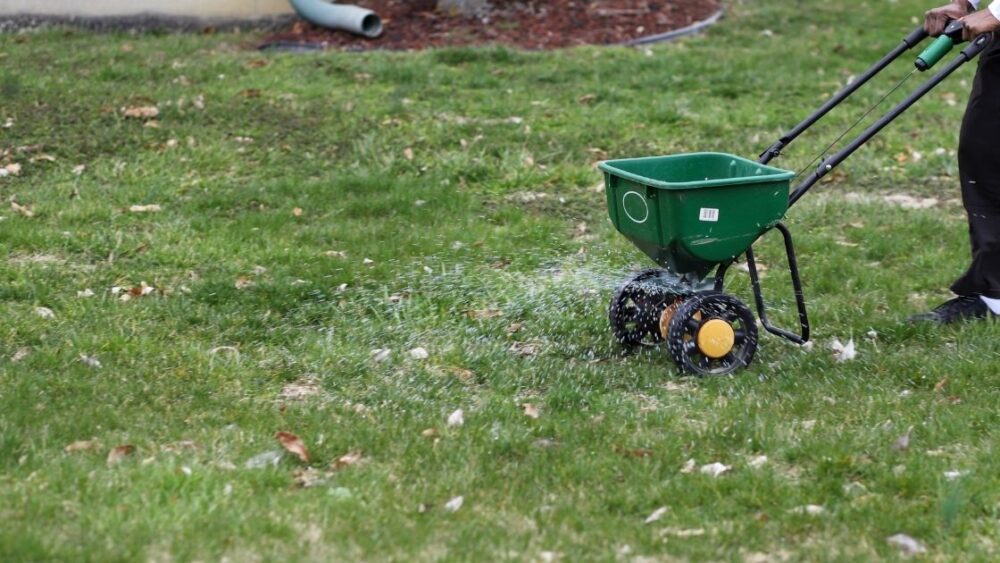
Broadcast spreaders have a hopper that you fill with the material you want to spread. The material then falls into a spinning plate or disc. The spinning action flings the material out of the spreader in a fan-like pattern. Be sure to calibrate your spreader before each use to ensure accurate spreading. This is to ensure that you provide as little, or as much spreading as you require.
What is calibration?
Calibration is the process of setting your broadcast spreader to the correct rate for the product you are using. To do this, set the spreader to its widest width and walk at a normal speed. Then, apply a small amount of product to an area that is 8-10 feet wide by 10-15 feet long. Weigh the product that was used and divide it by the area that was covered. This will give you the proper rate for your spreader.
What are Some Uses for Broadcast Spreaders?
As specified earlier, broadcast spreaders can be used for a variety of materials, including fertilizer, herbicides, grass seed, and any other granular material. They are also great for applying de-icer to your driveway or walkway in the winter and are a great way to evenly distribute material over a large area. They are great for reseeding and fertilizing lawns while knowing exactly how much material you are applying. This is generally what you want to be aware of when applying different materials based on manufactures recommendations.
For example, some fertilizer bags may cover 100 square yards, so you know to use one bag. This is where a spreader is useful in determining how to effectively spread an area.
For more information on grass and fertilizers, check out this article: Jonathan Green Lawn Care (Review and Product Guide)
What are the Different Types of Broadcast Spreaders?
There are two main types of broadcast spreaders: drop and rotary.
- Drop spreaders have a hopper that sits on top of the spreading plate. The material falls through an opening in the bottom of the hopper and onto the spreading plate. This type is normally used with walk and tow-behind spreaders.
- Rotary spreaders have a spinning disc that flings the material out of the spreader. The hopper sits on top of the disc and the material is fed into the center of the disc and is normally used with handheld types.
What are the benefits of a rotary spreader?
A rotary spreader is beneficial because it is lighter than a drop spreader and can be used to quickly spread material over a smaller area. Whereas a drop spreader is heavier and is less accurate under some applications.
What are the benefits of a Drop Spreader?
A drop spreader is beneficial because it is more accurate than a rotary spreader. It also has a smaller spreading width, which is helpful when you want to target specific areas. Additionally, the drop spreading action helps to prevent clogs, but make sure to clean the screen after each use. This is to avoid additional clogging while achieving ultimate usage.
While each has its own purpose, it all depends on how big of an area you may want to cover. If you have a small area, like a garden or flower bed, the handheld broadcast spreader would be perfect. If you are looking to a driveway or lawn, then the walk-behind broadcast spreader would be the better option.
For buyers that are looking for larger areas to cover, like a field or playground, the tow-behind broadcast spreader would be ideal. This spreader is great for those who don’t mind working a little harder to cover a large area, but also require a means to tow the spreader. Usually, small riding mowers provide an excellent way to attach spreaders and other small towable equipment.
What is the Best Type of Broadcast Spreader for my Needs?
The best type of broadcast spreader for your needs will depend on the material you are spreading and the area you need to cover. If you are spreading a light material, such as grass seed, a handheld rotary spreader may be all you need. For heavier materials, such as fertilizer, you will need a larger walk-behind model. Be sure to choose a spreader that is designed for the material you are using and the size of the area you need to cover.
Final Thoughts
Since there are many different types and models of broadcast spreaders on the market, it is important to do your research to find the best one for your needs. Be sure to consider the type of material you will be spreading, the size of the area you need to cover, and your budget when making your decision. While each serve their own purpose, you generally want to be efficient and waste as little of material as possible, especially if you are working on projects where you want to know exactly what you are using and spending.
